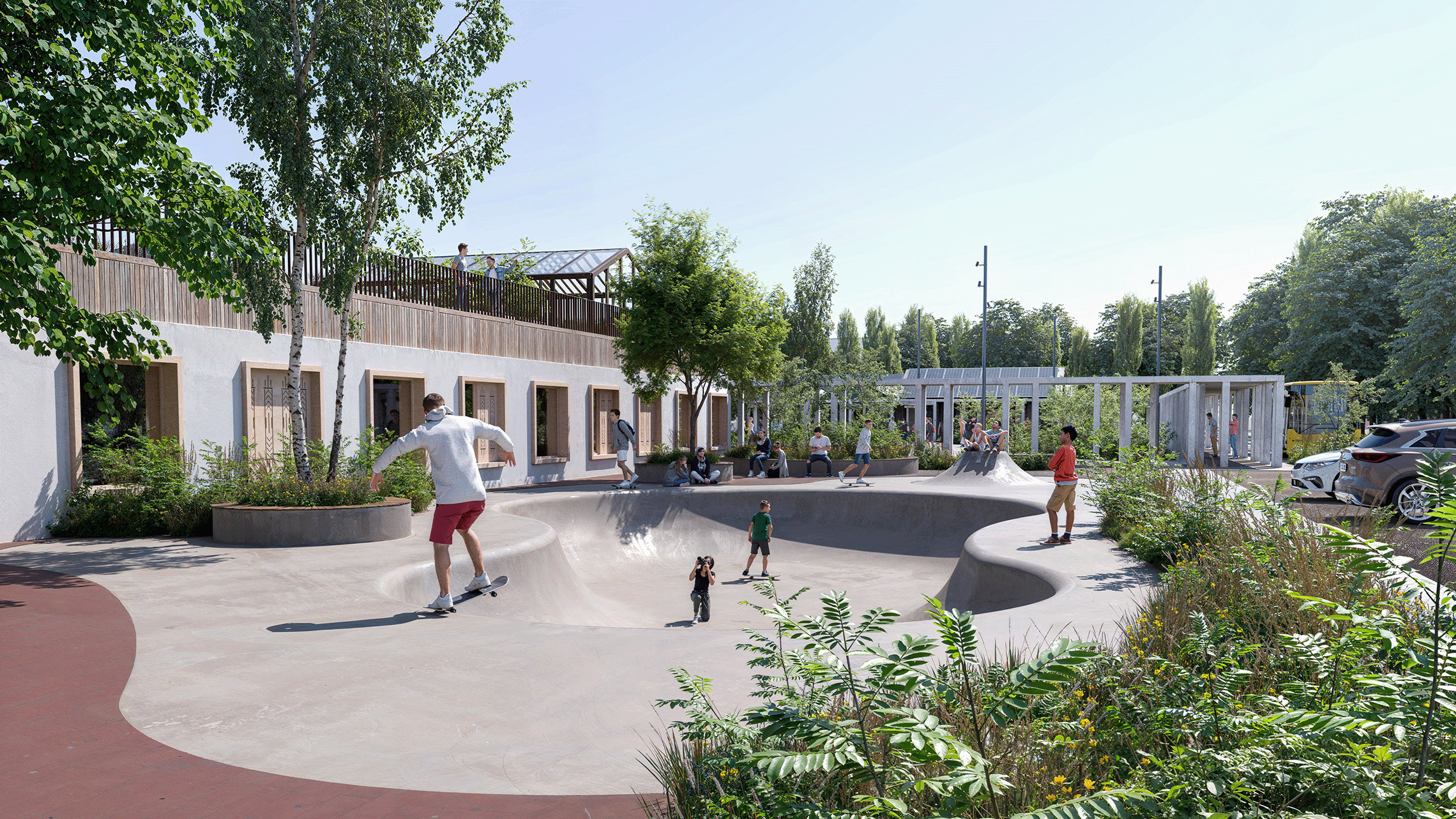The Panno School
The Panno School Complex is an innovative educational facility sustainable designed to create a holistic and inclusive learning environment for the children of Ukraine. It was created as part of the architectural competition “FUTURE SCHOOL FOR UKRAINE,” where it received high praise from the jury and secured 2nd place. This project is an international collaboration between two architectural offices: The Ukrainian office NOVA – New Office of Vital Architecture, and the Dutch office Orange Architects. The school where every element—from natural materials and collaborative spaces to sustainable architecture and green environments—actively contributes to the learning process, creates a holistic educational experience that fosters inclusivity, well-being, and a deep connection to the community and the environment. It is derived from decorative wall compositions that reflect traditional Ukrainian motifs and ornaments, thereby celebrating and embracing Ukraine’s cultural heritage.
Panno is an adaptive architectural system that captures the essence of modern Ukrainian schools.
The Panno School Complex is more than just a school, it is a multifunctional center and cultural hub. The design reinterprets traditional Ukrainian architectural styles into a modern educational setting for the neighborhood, integrating a library, café, media hub, sport facilities, research lab and community spaces. The school is conceived as a village or small settlement, where various functional spaces are individual buildings, corridors are streets, and open common spaces such as atriums or lobbies are squares. This setup promotes social interaction and continuous learning, as every element within the school environment serves an educational purpose. Visual connections throughout the school, such as glass doors and internal windows to classrooms and other learning spaces, ensure a seamless integration of different functions and spaces, fostering an environment where students learn from everything they see.
The Panno School Complex is designed to be highly adaptable, accommodating various regional traditions and economic contexts of Ukraine regions. The facade reflects a contemporary interpretation of Ukrainian architectural styles, also using recycled local materials from war-damaged buildings. This not only preserves cultural heritage but also ensures sustainability. The project features separate blocks, each with distinct functions and autonomous entrances, allowing for flexible use over time and by different age groups and community members. The modular design enables the school to be easily reconfigured or expanded, making it suitable for different urban and rural settings.
The facade reflects a contemporary interpretation of Ukrainian architectural styles, also using recycled local materials from war-damaged buildings.
A commitment to sustainability & context is central, as the project aims to reuse materials from war-damaged buildings for facade elements, paying tribute to the region’s heritage. In northeastern Ukraine, wood has traditionally been the main facade material, known for its decorative details. The project modernizes that with a minimalist design, using reused materials from war-damaged buildings. In the south, where plaster is common due to local resources, the project employs varied plaster textures for a modern, minimalist look. In northern and eastern Ukraine, brick is widely used, allowing for unique designs, with reused materials adding character and community value.
Sustainability is in the core and all the veins of the Panno School Complex. The project uses recycled materials and features a balanced site layout, with 50% dedicated to natural environments and 50% to build structures. Landscaping incorporates urban rewilding with native Ukrainian flora and fauna, enhancing biodiversity and creating an environmentally friendly setting. The energy passive building is employed with modern technologies such as solar panels, green roofs, and efficient ventilation systems to reduce CO2 emissions and promote energy efficiency. The design adheres to the Fresh Schools principle, ensuring ample natural light and ventilation, which are crucial for a healthy learning environment. Also, these blocks can be operated for a variety of double functions throughout the day, throughout the week, and throughout the year. Especially on weekends and during summer vacations.
- Site
- Ukraine
- Client
- NEB Lab
- Design
- 2024 >
- Size
- 9,750 m2
- Program
- Education
- Assignment
- Competition
- Team
- Patrick Meijers, Jeroen Schipper, Elena Staskute, Dmytro Borodin
- Collaboration
- NOVA
- Visuals
- Follow You Home
